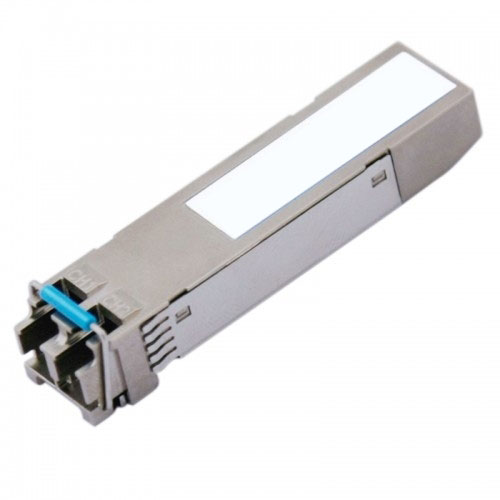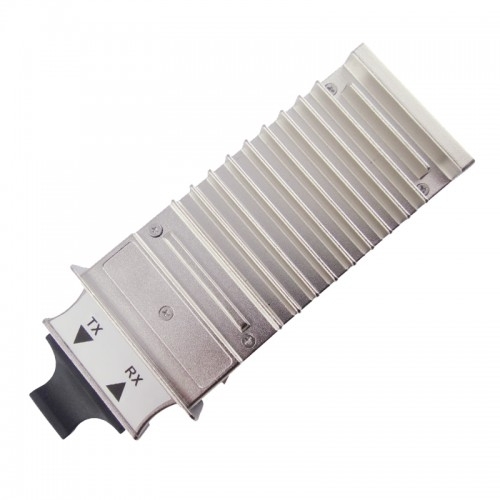- Related articles
- All Cisco DWDM-XFP-43.73's information (List price, Specs, Datasheet PDF, Compatibility ma
- All Cisco CVR-X2-SFP10G's information (List price, Specs, Datasheet PDF, Compatibility mat
- Optical Transceivers for Cisco SG550XG-8F8T-K9-UK Switch
- What 802.3 Standard Originally Defined Poe Functionality?
- All Cisco SFP-10G-LR-S's information (List price, Specs, Datasheet PDF, Compatibility matr
- The difference between GBIC and CSFP
- Optical Transceivers for Cisco SLM2048T-UK Switch
- Why Should We Care About 10 Gigabit Ethernet Pluggable Optics?
- Optical Transceivers for Cisco WS-C3650-24PD-S Switch
- All Cisco MFEFX1's information (List price, Specs, Datasheet PDF, Compatibility matrix)

Definition:
The CSFP MSA defines a transceiver mechanical form-factor with latching mechanism and a host board, SFP-like, electrical edge connector and cage. The CSFF MSA also defines a transceiver mechanical form-factor. The Dual-Channel CSFP has the same mechanical dimensions as the industry standard SFP transceiver and is compatible with the standard SFP cage. The Single-Channel CSFP and CSFF are half the size of the industry standard SFP and SFF packages.
X2 Optics are a standardized form factor for 10 Gbps fiber optics transponders. Both 10G Ethernet and 10G Fibre Channel versions are available. X2 optics are used in datacom optical links only (not telecom), and they are smaller than XENPAK transponders.
Difference between CSFP and X2
Compact-SFP is a new kind of fiber transceiver usually known as CSFP fiber optic transceivers. CSFP has the same size of SFP, Cisco also called this as 2- channel bi-directional SFP. The Sopto 2-channel 1000BASE-BX-D SFP module, also known as Compact BIDI SFP, integrates two Bi-directional interfaces in one SFP module. The Compact SFP is always connected to two 1000BASE-BX10-U interfaces over two single strands of standard SMF with an operating transmission range up to 20km.
X2 optics is essentially an enhanced version of the Xenpak. It also has the same connector as a Xenpak (SC). Cisco introduced the X2 form factor and HP is producing them as well. Although X2 optics is quite old and bulky, they are still used in the newer product line of Cisco, i.e. the ASR 9000 series. The reason for this is that Cisco has not officially offered the SFP+ for longer distances or a SFP+ for DWDM. The X2 optics come in 4 different versions: SX, LX, EX and ZX. The SX version will work on Multi Mode fiber, the LX, EX and ZX work only on Single Mode fiber.
| Package | Data Rate/Application | Wavelength | Distance | Interface | Fiber Mode | Fiber Count |
| X2 | 10G Ethernet/SDH/SONET/Fiber Channel | DWDM 850nm 1310nm 1550nm CWDM 1270nm~1450nm CWDM 1470nm~1610nm | 220m 300m 10km 40km 80km | SC | Single-Mode Multi-Mode | Dual Fiber |
| CSFP | 1.25G Ethernet/SDH/SONET/Fiber Channel | BIDI WDM 1310/1490nm BIDI WDM 1490/1310nm | 10km 20km | LC | Single-Mode | Single Fiber 2-Channel BIDI |
CSFP features:
- Support up to 1.25Gbps Data Links
- Single 3.3V Power supply and TTL Logic Interface
- 2XBi-directional transceivers in 1 Compact SFP transceiver package
- Class 1 FDA and IEC60825-1 Laser Safety Compliant
- Operating Case Temperature Standard: 0~+70C and Industrial -40~+85C
- Compliant with CSFP MSA Option 2 or Option 1
- Compliant with Digital Diagnostic Monitor Interface SFF-8472
X2 10G features:
- Compatible with SENPAK MSA Rev 3.0
- Support of IEEE 802.3ae 10GBASE-L
- XENPAK MSA package with duplex LC connector
- With Digital Diagnostic Monitor Interface
- Operating temperature range 0 to 70 degrees Celsius
- Hot Pluggable 70-PIN Connector with XAUI Electrical Interface
Conclusion:
The CSFP transceiver consists of 2-channel Bi-directional transceiver unit with five sections: the LD driver, the limiting amplifier, the digital diagnostic monitor, the 1310nm DFB laser and the 1490nm PIN photo-detector. The optical output can be disabled by a TTL logic high-level input of Tx Disable, and the system also can disable the module via I2C. Tx Fault is provided to indicate that degradation of the laser. Loss of signal (LOS) output is provided to indicate the loss of an input optical signal of receiver or the link status with partner.
X2 optics always shaves a Tx (sending laser) and a Rx side (receiver). The difference between the sending power (in dB) and the receiving power (in dB) is called the power budget and will determine the distance an optic can cover, where the laser light (in nanometers) also has an important role.























































